The Best Comics of 2017
Peter Breedveld
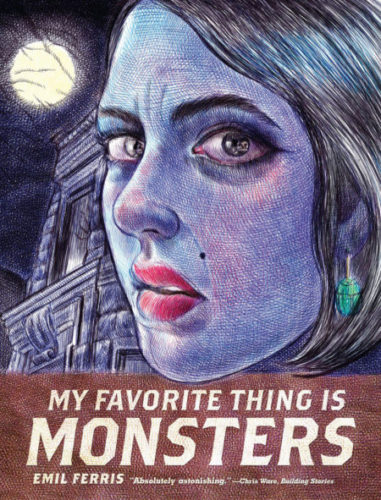
This past year I have read less than I wished I had and a huge pile of comics and novels is sitting beside my bed staring at me accusingly for neglecting them.
The thing is, I was doing fine until I started to read Alan Moore’s gigantic novel Jerusalem. I never read two books at the same time, so I resolved to not start anything else before finishing this.
Jerusalem is breath-takingly good, I assure you. It’s also 1300 pages of very detailed descriptions of everything, a deeply philosophical work, at times hard for me to grasp and in any case it’s impossible to absorb in a few reading sessions (I expected to be engaged with it for a few weeks, it’s been months now).
To make a long story short: I got stuck in it. The book has me imprisoned and I don’t see any light at the end of the tunnel yet.
I know, it’s a strange confession but that’s how it is. This is not to say I haven’t read a lot of brilliant comics this year. Here follow ten of them.
10: Fred de Heij: ‘Roca Verde‘
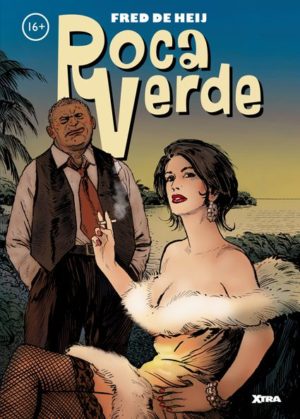
Dutch comic artist Fred de Heij is probably the most productive comic artist I have ever met. He produces several pages a day with a constant high quality and works on different series and stories at the same time. Sometimes based on the scripts of other writers, but his best work is written by himself.
It’s always totally tasteless, often extremely violent, pornographic and offensive on more levels than you probably care to count. It’s hugely entertaining and hilarious. De Heij just doesn’t give a shit about what you think, he’s having fun and he doesn’t force you to read his stuff.
His characters jump around the pages, always hyperactive, yelling at each other, gesticulating like Italian comedians, killing, maiming and fucking each other like the Three Stooges on drugs. De Heij gives the impression he makes up the story at the same time he’s drawing it, everybody reacting to everybody else spontaneously as if improvising on the spot.
Roca Verde is a soapy comedy thriller full of intrigue, murder and pornography. Entrails, blood and sperm drip from every of the 200 or so pages, and you will learn a wide range of new inventive Dutch insults.
It’s totally crazy, it’s quite brilliant, I’m loving it.
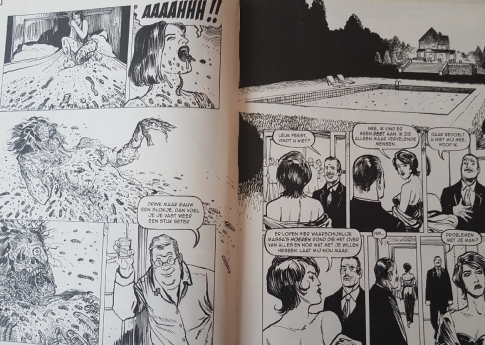
9: Fiona Staples & Brian K. Vaughan: ‘Saga‘
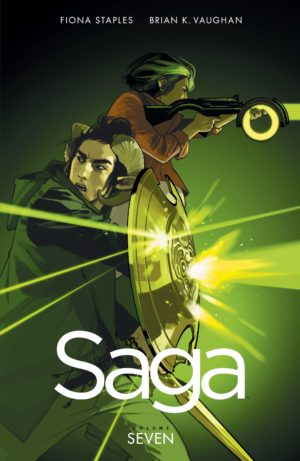
Last year I said I wouldn’t include the comic series I have been following for the last couple of years in my list, because then the list would more or less look the same every year. Then I realised I never put Saga on my list, which is one of the most thrilling comics out at this moment.
I follow the story in the yearly trade paperbacks, each one collecting six separate issues of the series. This past year the seventh volume of those paperbacks was published.
The comic is heavily influenced by Star Wars, a blend of science fiction and fantasy, only it’s much, much more brutal, clever, iconoclastic, anarchistic and political, with a profundity Star Wars sorely lacks.
The story deals with some intergalactic war between two planets, with many other planets choosing sides. Two soldiers from two opposing armies have a child together and must flee for their people hunting them as traitors, with a range of bounty-hunters on their trail. Along the way they make a lot of extremely weird friends and have a lot of extremely weird adventures.
The story is told by the child of the couple, who is thus the only one we’re sure will survive all this mayhem.
I absolutely recommend this series, a roller coaster of a story with art of a constant quality, often lacking in this kind of monthly American comic. I urge you to also read Vaughan’s series (completed several years ago) Y: The Last Man too, which he made together with Pia Guerra.

8: Mike Mignola: ‘Hellboy in Hell Library Edition‘
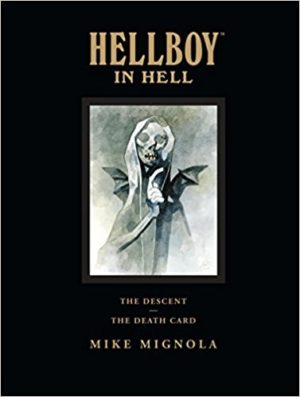
I have been collecting Mike Mignola´s comics for about thirty years, seen him develop from a main-stream comic artist with a fairly distinct drawing style into one of the true masters of minimalist comic art with his own unique, very personal style, pairing the European Clear Line (established by Tintin’s author Hergé) and the Atomic Style (perfected by Yves Chaland) to German Expressionism. About twenty years ago he started his horror superhero comic Hellboy, telling stories based on folklore all over the world, leaning heavily on atmosphere and silences.
I collected the separate Hellboy issues until the comic store in my town closed down and I started to miss issues. Therefore I began to follow Hellboy’s adventures in the so-called Library Editions, large, heavy, black tomes collecting the subsequent story arcs in Hellboy’s greater epic adventure.
Hellboy in Hell is the concluding piece of this adventure, and it’s thrilling and exciting and fucking beautiful and also really really melancholic and sad.
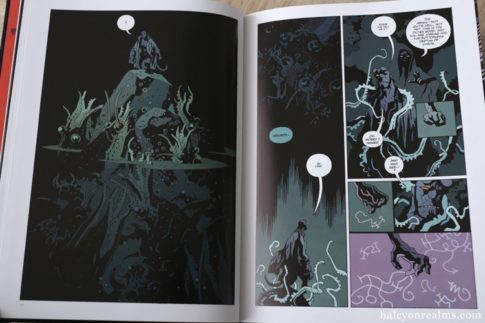
7: Tillie Walden: ‘Spinning‘
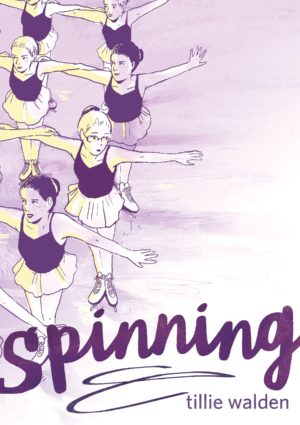
I told you in 2015: the super young Texan comic artist Tillie Walden is going places. Besides being an incredibly talented artist and a very gifted storyteller with a knack for atmosphere, she also has the turn-out of a machine, producing one comic after the other, faster than I can read them, publishing new stories on her website almost daily and in the mean-time she somehow found the time to write and draw Spinning, an impressive autobiographical coming of age novel in which she couples her ups and downs as a figure skater to her own self-discovery as a queer woman.
Gorgeous book, steadily paced and with a calm, even-handed tone, Walden gives ample room to the silences emphasizing everything that happens in between those silences.
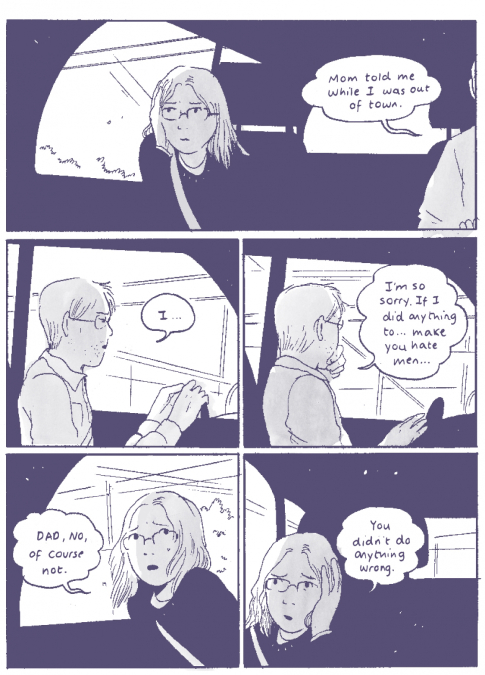
6: Katie Skelly: ‘My Pretty Vampire‘
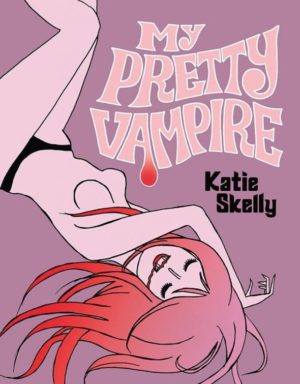
There is a Dutch classic comic from the sixties called Iris, drawn by one of the world´s greatest comic artists (now a celebrated children’s book illustrator), Thé Tjong-Khing. That is what My Pretty Vampire reminds me of a lot, with it’s pop art style, candy-colored psychedelic images and surrealistic feel.
The story deals with a woman turned into a vampire by some sort of cult, at the request of her brother who wishes to keep her for himself, as a prisoner, feeding her oxen blood to still her cravings for human blood.
She escapes and leaves a trail of human bodies, all males at the start, but later on women too, on her quest for freedom. A former cop, hired by her brother, tracks her down and erases the evidence found on all the scenes of crimes incriminating her. Will he find her in time, before she’ll be caught by the police, and will he then be able to return her to her brother?
My Pretty Vampire is fresh and cruel and sexy and wierd and very, very pretty.
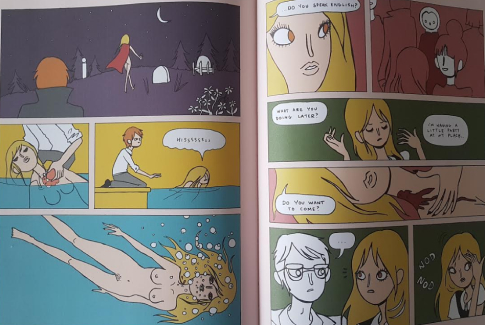
5: Marie Spénale: ‘Heidi au Printemps‘
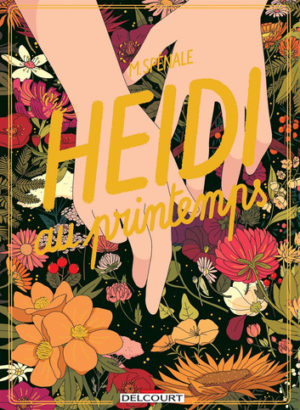
Is there a more a-sexual literary work than Johanna Spyri’s children’s book Heidi? Well, Marie Spénale gives Heidi a sex life. Heidi returns to her grandfather in the mountains, has sex with Peter and discovers she wants to be an independent woman.
This is not your run-off-the-mill sex parody but a serious novel for adolescents and young adults, be it very, very explicit.
Drawn in a fresh, clear and simple children’s book style, embellished with bright colours and told in a straight forward manner, Heidi au Printemps may seem like a simple book but it is anything but that. Spénale spins a clever, psychologically layered story about a girl turning into a woman, choosing her own path, confronting her loved ones with the fact that they need to let her go.
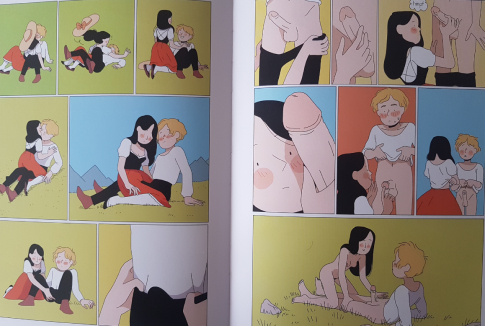
4: Jillian Tamaki: ‘Boundless‘
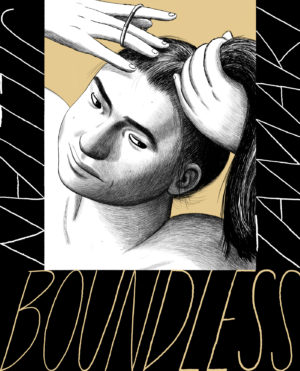
We know Jillian Tamaki from the collaborations with her cousin Mariko, with whom she made a couple of excellent coming of age comics: Skim and This One Summer.
Boundless is a collection of short stories published earlier in different media. They are very different from each other in form, from page-filling, expressive drawings accompanied by verse-like texts, to more traditional comics, with dialogues in balloons. They are almost all horror stories. Not in the traditional way, but in virtually every story there is a mostly unidentified danger turning the lives of unexceptional people upside down.
They tell us something about modern life, for instance ‘1.Jenny‘, about a woman seeing her perfect alter-ego lead a perfect life she can only dream of on a strange Facebook-like website, and Sex Coven, about a mysterious piece of music derailing a whole generation of young adults, alienating them from society.
Boundless shows once again that Jillian Tamaki is one of the most important comic creators today.
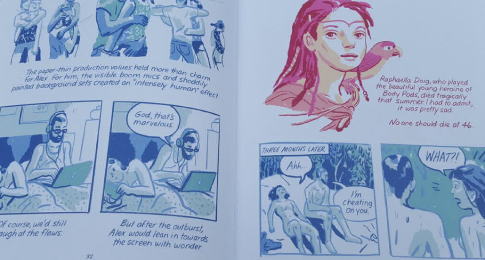
3: Eleanor Davis: ‘You & A Bike & A Road‘
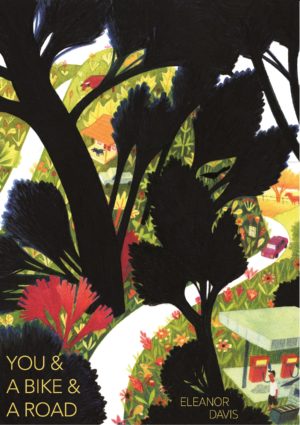
This little book, an account of a tour by bike Eleanor Davis made from Tucson, Arizona to Athens, Georgia, seems like a quick snack in-between meals. The drawings are doodle-like, the book looks like a carnet de voyage.
You & A Bike & A Road is, however, proof of Davis’ absolute mastery of graphic storytelling. Davis utilizes the full potential of every line she draws, the page it is drawn on, the empty spaces on that page, it’s just a perfect work of art. She brings everything back to the basics, to an absolute minimum, to give all the room to the story she tells.
Which is, of course, more than just an account of her bike tour. It is about the state of America, its people, about Mexicans trying to cross the border illegaly. There is one scene in which Davis witnesses a man getting caught by border patrol men, slowly paced, tense, just one drawing a page, the man like a wounded animal and the armed guards surrounding him like dogs. It’s more gripping than any documentary I’ve seen.
Davis shows this side of the US, understated, not as sensational as movies would have it, yet unrelenting in a silent way. She also shows another side. Of a patrol man sharing his water with her, chuckling when she says he probably meets a lot of thirsty people. She meets curious teenagers, still unprejudiced, a mourning old woman, friendly truckers who don’t rape her, as they would in any film I’ve seen.
Sometimes the drawings are a little more worked out, with more detail. It shows how accomplished Davis is. But the most powerful are the sketchy scenes, just a few lines. A house with a porch, a landscape, or just the suggestion of a landscape. The readers fills in the rest in his mind. Same with that scene with the illegal immigrant. Davis shows us almost nothing. But the scene is so intense, so gripping because its just a seed which is planted in our minds, and there it grows into a flowering plant.
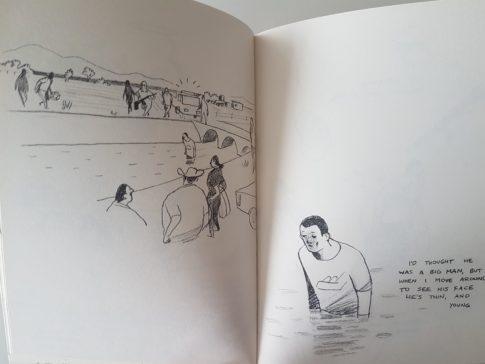
2: Julie Birmant & Clément Oubrerie: ‘Isadora‘
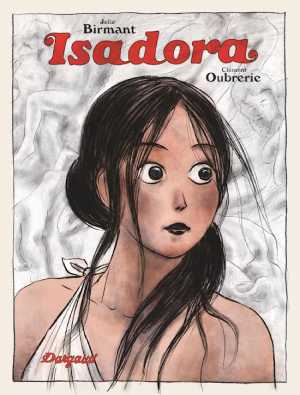
Isadora Duncan (1877-1927) was the founder of modern dance. She freed herself from the suffocating limitations of classic ballet and improvised on the stage, wearing a kind of a Greek tunic with nothing underneath, so as to have total freedom of movement.
I had never heard of her, I know nothing about dance. I learned all this and more in this book by the same couple who brought us Pablo, which is not so much about Picasso as it is about his first lover Fernande Olivier.
Isadora is even better than Pablo. It’s an energetic, passionate book with brilliant art work and much psychological insight. It’s compassionate with a sense of awe, but never hagiographical. You could even say Birmant, who is the writer (Oubrerie is the artist) displays a certain mean wit describing Duncan’s often tragical life.
I must say I got quite fascinated by Isadora Duncan. She had a burning desire for freedom, for freeing herself of any constraints, and caused a scandal in a Boston theatre by bearing her breasts in front of her posh audience. She was a little too forward for the men of her time, being turned down quite a few times by the men she desired but who would have nothing of her sexual open mindedness. Nudity equaled freedom for her, in a society where it was mainly associated with shame.
Her brother was from the same mold, convincing her family to move to Greece and live like the ancient Greeks there, nude and in harmony with nature. Isadora partook in that life for a while, until she realised she needed her audience, needed to be seen.
I discovered there’s a movie about her too, from 1968, starring Vanessa Redgrave. I’m looking very much forward to watching that one of these days.

1: Emil Ferris: ‘My Favorite Thing is Monsters‘
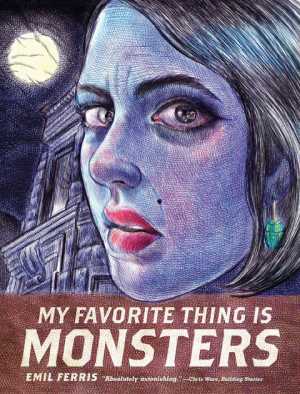
I know, everybody seems to have this as their favorite comic book. But it’s really the best comic that came out this year. I dare even go further: it’s the best thing that has come out in years.
My Favorite Thing is Monsters is mind-blowing, it’s like the early novels like Don Quijote and Tristram Shandy, so unconventional, so multi-faceted and free, so daring. Ferris jumps from form to form, quickly changing her drawing style (from sketchy to extremely detailed, warm colours to icy blue and black and white) to adapt to the atmosphere and the pacing of a scene, skipping from fantasy to harsh reality, harmoniously blending her texts with her images, showing us horrific things then making us laugh in this breath-taking rabbit hole of a story.
The book, made to look like a girl’s diary cum sketchbook (an extremely talented girl that is) deals with a prepubescent girl, Karen Reyes, who lives in an urban neighbourhood in Chicago in the late sixties. Karen, from Latin-American descent, lives in a basement with her mother and brother, who is a free-wheeling artist and quite the ladies man.
One of Karen’s neighbours, a Holocaust survivor named Anka Silverberg, dies under suspicious circumstances but the police quickly declares the death a suicide. Reyes, obsessed with horror movies and comics, fancies herself a monster detective and decides to find out who and what really caused the death of her neighbour. She discovers the woman’s horrible but also extremely wierd past and realises that the monsters in her fantasies are cuddly creatures compared to the normal looking humans in the real world.
In the mean time so much else is going on in Karen’s life. Her mother is diagnosed with cancer, her best friend sides with the bullies in her school, which is run by despotic Catholic nuns and she discovers her own sexuality.
Ferris tells all these stories like a true virtuoso, easily shifting perspectives, from Silverberg’s to Karen’s, who takes us with her in her dreamworld and describes the other inhabitants of her building, a colourful collection of societal rejects, from a deranged puppeteer to a conscientious gangster, not to mention her own extremely superstitious mother who dabbles in the occult.
I’d be surprised if this will not be turned into a movie soon. This book is kind of a movie on paper already. Man, what a feat. And take note that this is the debut of a woman already in her fifties.
Pure genius!

Comics, Lists, Peter Breedveld, 01.01.2018 @ 16:39


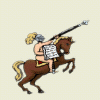
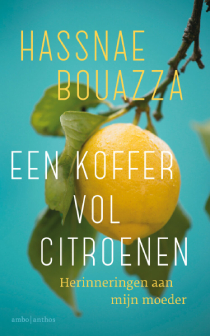
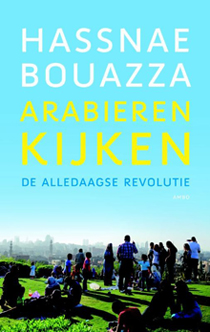
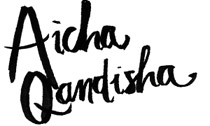

 RSS
RSS